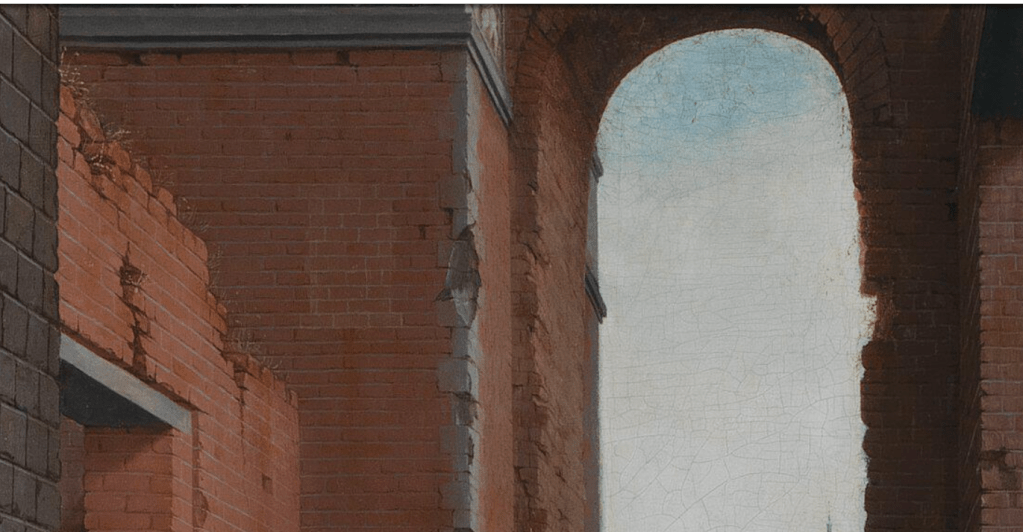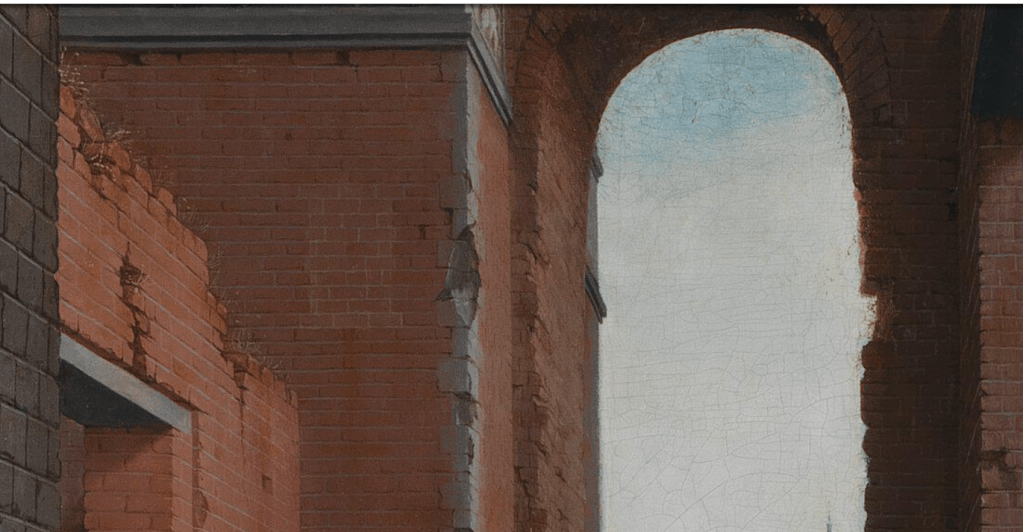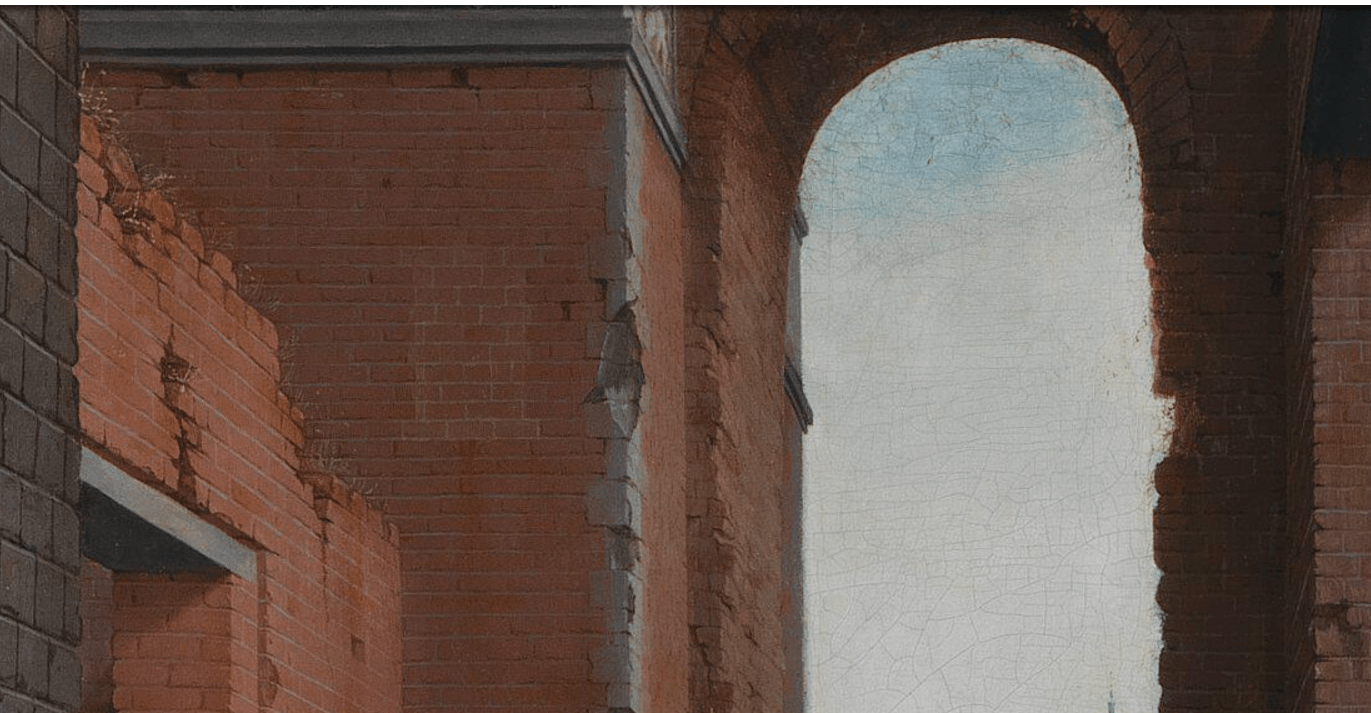Ruins
Rest assured, ruins are not mentioned in any biblical account of Christmas – but nevertheless, they are a common feature in paintings. I’ve written about them recently, as it happens, long after Christmas, when Jesus, Mary and Joseph had already returned from their flight into Egypt, and were settling down to what could have been normal family life (115 – Role Models).

But if ruins weren’t mentioned, what are they doing there? After all, we know full well that Jesus was born in a stable, don’t we? We do, but we’re wrong – at least as far as the bible is concerned. There’s no mention of a building at all – apart from the building where Christmas didn’t take place (‘the inn’). Early apocryphal gospels suggest that the holy birth took place in a cave, and there are plenty of paintings which show that, mainly from the 13th and 14th centuries, although the idea does survive into the Renaissance in a few examples. All the bible says is that Mary ‘…brought forth her firstborn son, and wrapped him in swaddling clothes, and laid him in a manger; because there was no room for them in the inn.’ (Luke 2:7) The fact that a manger is a food bowl (from the French, manger, ‘to eat’) tells you what a remarkable story this is, even if you don’t believe it. Let’s face it, the Son of God, who is God (it’s a mystery) becomes a human baby and they put him in an animal’s feeding trough – what greater humility could there be? Anyway, the assumption must have been, because the ox and the ass were there as well (more of them another day), that this manger must have been in a stable. But no – here the birth has taken place amidst ruins.
There are several reasons for this. And now I’m going to quote from myself to save time (apologies if you’ve just read 115, I’m repeating myself): ‘In Nativity scenes the symbolism is quite specific: it relates to at least two texts in the bible, and early Christian theology. During the Sermon on the Mount (Matthew 5:17) Jesus says, ‘Think not that I am come to destroy the law, or the prophets: I am not come to destroy, but to fulfil,’ and in John 2:19 he also says, ‘Destroy this temple, and in three days I will raise it up.’ In St Augustine’s The City of God, written in the early 5th Century, the author suggests that as Christianity continued to grow, the Roman Empire would fall. All three of these ideas add up to the same thing – Jesus hadn’t come to destroy the old order, whether that be Judaism or Rome, but to rebuild it – and that is the idea that the ruins represent.’ Not only that – ever since the fall, when Adam and Eve had failed to resist temptation, the world had been in a state of decay. We grow old and die, and buildings crumble into dust.

They are quite splendid ruins. We see the edge of a stone structure on the far left, and, leading away from that, the remains of a brick wall with a doorway in it. A stone lintel was set in place to support the wall above it, but that has cracked in any case, and only a few courses of bricks survive. The rest of the wall fell away long enough ago for plants to have sprouted all the way along the top. This wall seems to be an addition to the one further back, as the bricks are not meshed with those of the far wall – and we can see that other alterations have taken place. There is a bricked up window, for example: both the bricks and mortar are paler in colour, less weathered. The corner of this wall is made up of stones, larger and on the whole greyer than the bricks, and these have cracked, chipped and broken away. The cornice above has survived better, and continues beyond the monumental semi-circular arch beyond. The rounded arch is significant, but we’ll find out why tomorrow!
What it comes down to is that in this painting, as in the bible, there is something old and something new – the building is old, and represents the old order. Jesus is new, and has come to rebuild, to put the world to rights.

Really enjoying your advent calendar. Look forward to it each day! Have worked the painting out and it’s a wonderful work of art.
LikeLike
Thank you! And yes, it is!
LikeLike
Ditto, I knew I had seen the painting but struggled with the artist until today when the ruins gave it to me. It’s a great choice for an advent calendar, so many options for cameos. Thank you so much for sharing this.
In due course I would love your take on the peroxide blonde curls of the character on the left who also looks like they (sic) are wearing an early version of a Chanel quilted bag. Sorry for the levity, the eggnog must have gone to my head …
LikeLike
Thank you – it’s a pleasure – and let’s see what happens!
LikeLike
Wonderful lesson. I need to go back and catch up on your series. Thank you 😀
LikeLike